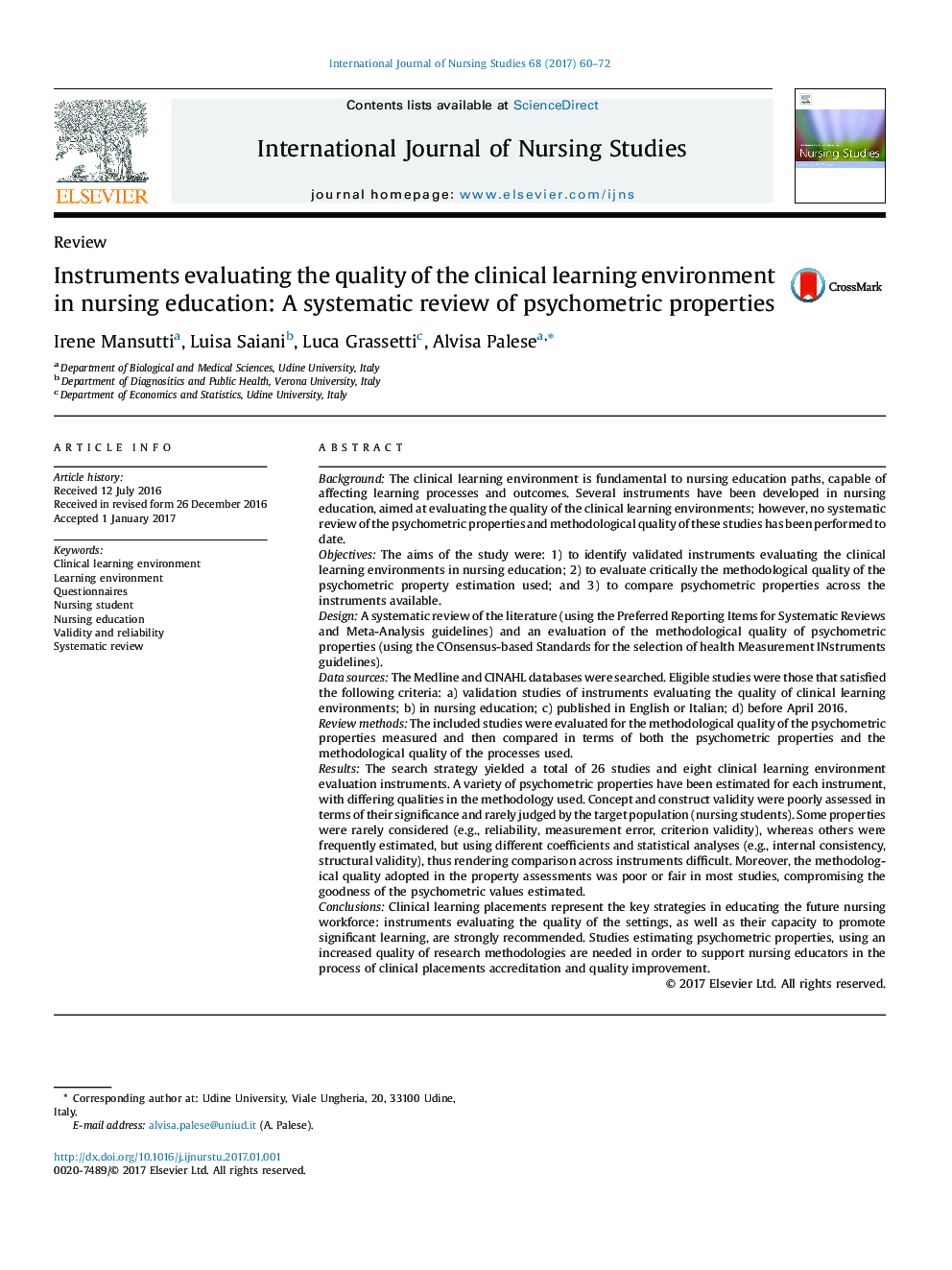| Article ID | Journal | Published Year | Pages | File Type |
|---|---|---|---|---|
| 5121023 | International Journal of Nursing Studies | 2017 | 13 Pages |
BackgroundThe clinical learning environment is fundamental to nursing education paths, capable of affecting learning processes and outcomes. Several instruments have been developed in nursing education, aimed at evaluating the quality of the clinical learning environments; however, no systematic review of the psychometric properties and methodological quality of these studies has been performed to date.ObjectivesThe aims of the study were: 1) to identify validated instruments evaluating the clinical learning environments in nursing education; 2) to evaluate critically the methodological quality of the psychometric property estimation used; and 3) to compare psychometric properties across the instruments available.DesignA systematic review of the literature (using the Preferred Reporting Items for Systematic Reviews and Meta-Analysis guidelines) and an evaluation of the methodological quality of psychometric properties (using the COnsensus-based Standards for the selection of health Measurement INstruments guidelines).Data sourcesThe Medline and CINAHL databases were searched. Eligible studies were those that satisfied the following criteria: a) validation studies of instruments evaluating the quality of clinical learning environments; b) in nursing education; c) published in English or Italian; d) before April 2016.Review methodsThe included studies were evaluated for the methodological quality of the psychometric properties measured and then compared in terms of both the psychometric properties and the methodological quality of the processes used.ResultsThe search strategy yielded a total of 26 studies and eight clinical learning environment evaluation instruments. A variety of psychometric properties have been estimated for each instrument, with differing qualities in the methodology used. Concept and construct validity were poorly assessed in terms of their significance and rarely judged by the target population (nursing students). Some properties were rarely considered (e.g., reliability, measurement error, criterion validity), whereas others were frequently estimated, but using different coefficients and statistical analyses (e.g., internal consistency, structural validity), thus rendering comparison across instruments difficult. Moreover, the methodological quality adopted in the property assessments was poor or fair in most studies, compromising the goodness of the psychometric values estimated.ConclusionsClinical learning placements represent the key strategies in educating the future nursing workforce: instruments evaluating the quality of the settings, as well as their capacity to promote significant learning, are strongly recommended. Studies estimating psychometric properties, using an increased quality of research methodologies are needed in order to support nursing educators in the process of clinical placements accreditation and quality improvement.
